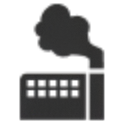selective catalytic reduction scr system
A modern emissions control technology, the Selective Catalytic Reduction (SCR) system is designed to reduce Nitrogen Oxide emissions from diesel engines. It has the ability of not only to remove these harmful gases which cause harm for people and environment that meet the most stringent ecological regulations, but also converts them into non-toxic nitrogen and water vapour. The SCR system consists of a catalyst-coated metal substrate, a urease catalyst and an SCR (Selective Catalytic Reduction) dosing system that injects diesel exhaust fluid (DEF) into the exhaust stream. This occurs in an optimized temperature range, thanks to precision controls and sensors. Exhaust emissions regulations have become stricter and stricter. The regulations of many countries clearly state that the nitrogen oxide emissions have to be reduced to one-fifth or less of their current levels. This is the reason why the SCR system is so widely used. Among other things, it has been installed in diesel freight trucks, railway locomotives and construction machinery. All these uses help make for cleaner air and a healthier environment.


